2023 Caribbean American Heritage Month: Commemorating Diversity and Celebrating Culture

June is a month filled with vibrant celebrations, commemorations, and observances. From Pride Month to Juneteenth, and many others, there is no shortage of significant events for us to recognize! Amidst this bustling array of festivities, it is important to acknowledge and honor the rich culture, contributions, and history of the Caribbean American community.
Caribbean American Heritage Month, observed annually throughout June, offers a unique opportunity to appreciate and learn from the achievements and experiences of this community. This observance recognizes the immense impact that Caribbean Americans have had on various aspects of American society, including politics, sports, arts, music, literature, and business. The Caribbean region comprises a blend of diverse cultures, languages, and traditions, each contributing its own unique aspect to other cultures in America. The richness of the Caribbean American experience stems from the heritage and ancestral connections to countries like Jamaica, Haiti, Trinidad and Tobago, Puerto Rico, Cuba, the Dominican Republic, and more.
The contributions of Caribbean Americans extend to every facet of American life with many making strides and accomplishments in the business field. Robert L. Johnson is an entrepreneur and founder of Black Entertainment Television (BET). He became the first African American billionaire and is known as a pioneer in the media industry.
Rohan Marley is the son of Jamaican singer, Bob Markley and is known for his success as an entrepreneur and businessman. He is the co-founder of the popular Marley Coffee brand which specializes in sustainably sourced coffee products.
Dr. Claire Nelson is the founder and president of the Institute of Caribbean Studies, a Washington, D.C.-based organization focused on promoting Caribbean economic and cultural development. She has been a strong advocate for Caribbean American businesses and has worked extensively to promote economic opportunities and partnerships in the Caribbean region. Their achievements, and the achievements of so many others, have inspired generations and continue to do so today.
From the early waves of Caribbean immigration during the post-slavery era to the recent influx of professionals, entrepreneurs, and artists, Caribbean Americans have played an integral role in shaping America’s social, economic, and cultural landscape. Caribbean American Heritage Month serves as a reminder to appreciate the achievements, history, and ongoing impact of this vibrant culture within American society. By spotlighting Caribbean American culture, we acknowledge the richness and diversity that continues to shape our nation. Let us take this opportunity to learn, appreciate, and celebrate the traditions, achievements, and experiences of Caribbean Americans as we strive for a more inclusive and interconnected society.

Sincerely,
Terrence Clark
MBE Spotlight: Aakash Singh

Aakash Singh has a strong passion for technology and a background in account management leading to his success as an Account Manager at ATD Technology LLC. Through his work at ATD Technology, he was able to merge his love for technology with his expertise in managing accounts. He prides himself in being dedicated to providing exceptional service and building lasting relationships with his clients. Singh thrives on the challenges that come with understanding his clients’ needs and delivering tailored solutions to drive their success.
As an Account Manager, Singh knows the importance of open communication, trust, and integrity when it comes to working with clients. His goal is to not only meet client expectations but exceed them by consistently delivering exceptional service and forging strong partnerships. Singh also stays knowledgeable and up to date about his products, services, and industry trends, to be able to provide valuable insights and recommendations that help his clients stay ahead of their competitors.
About ATD Technology
ATD Technology LLC is a leading technology solutions provider dedicated to empowering businesses with cutting-edge solutions and exceptional customer service. With a strong focus on innovation, they strive to deliver transformative technology solutions that drive their clients’ success.
They offer a comprehensive range of services, including software development, cloud computing, cybersecurity, data analytics, and IT consulting. Their solutions are tailored to each client to meet their unique needs and challenges to ensure optimal performance and maximum efficiency.
What sets ATD Technology apart is its unwavering commitment to customer satisfaction. They believe in building strong relationships with their clients, understanding their goals, and working collaboratively to achieve success. They prioritize open communication and active listening to ensure they deliver solutions that align with their client’s objectives.
Their team of experts brings extensive knowledge and experience to the table, allowing them to tackle complex projects and deliver results. They combine technical expertise with a strong focus on quality, reliability, and innovation, ensuring that their clients receive best-in-class solutions.
They take pride in their reputation for excellence and their track record of delivering successful projects across various industries. Whether their clients are small startups or large enterprises, they have the expertise and resources to meet their needs and exceed expectations.
ATD Technology is dedicated to being at the forefront of technological advancements and industry trends. They continuously invest in research and development to stay ahead of the curve and provide their clients with the most up-to-date and effective solutions.
What does being a minority business, or supporting minority businesses, mean to you?
Being a minority business means being a part of a community of businesses that are owned and operated by people who have been historically marginalized. It comes with the responsibility of being a role model for other minority businesses and showing them that it is possible to succeed. It also gives us a voice for the minority community and allows us to advocate for policies that will help to create a more just and equitable society.
ATD Technology LLC is committed to supporting other minority businesses. We believe that by working together, we can create a more prosperous future for all. We provide support to minority businesses in a variety of ways. We have a dedicated team that is responsible for sourcing minority businesses for our contracts and we offer mentoring and training programs to minority entrepreneurs. We advocate for policies to help minority businesses succeed and we believe that by supporting minority businesses, we can help to create a more prosperous future for all.
We believe that supporting minority businesses is good for business. Minority businesses are more likely to hire from within their communities, which helps to create jobs and opportunities. They are also more likely to spend their profits in their communities, which helps to stimulate the local economy.
We are proud to be a minority business and we are committed to supporting other minority businesses. We believe that by working together, we can create a more just and equitable society for all.
How has being certified with the NMSDC helped your business?
Being certified with the NMSDC has helped ATD Technology LLC in a number of ways. First, it has given us access to a wider range of opportunities. The NMSDC has a network of over 10,000 corporate members, and as a certified business, we are eligible to bid on their contracts. This has opened up new opportunities for us and has helped us to grow our business. We were awarded a contract with a Fortune 500 company that we would not have been eligible for without our certification.
Second, being certified with the NMSDC has given us access to resources and support. The NMSDC offers a variety of programs and services to help minority businesses succeed, including training, mentoring, and networking opportunities. These resources have been invaluable to us in our growth and development.
Finally, being certified with the NMSDC has given us credibility. When potential clients see that we are certified with the NMSDC, they know that we are a legitimate business that is committed to diversity and inclusion. This has helped us to build relationships with new clients and has helped us to win new contracts.
Overall, being certified with the NMSDC has been a valuable experience for ATD Technology LLC. It has helped us to grow our business, access new resources, and build credibility. We are grateful for the support of the NMSDC and we look forward to continuing our partnership in the future.
What is one thing you wish you had known when you were starting out in your career?
If I could go back in time and give myself one piece of advice when I was starting out in my career in Talent Acquisition, it would be to focus on building relationships. Talent Acquisition is all about people, and the best way to be successful in this field is to build strong relationships with candidates, hiring managers, and other stakeholders.
I had to learn how to handle rejection early on in my position. Not every candidate you place will be a good fit for the job and it is important to handle rejection gracefully and be able to move on to the next candidate and placement.
You also have to learn how to work with a variety of people and personalities. In Talent Acquisition, you will work with candidates from all walks of life. It’s important to be able to build relationships with people from different backgrounds and cultures and be able to understand where they are coming from to better help them and their needs.
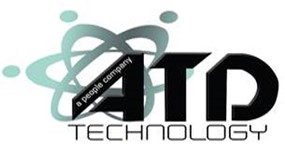
For more information on ATD Technology LLC, please visit: atdtechonolgy.com or follow them on social media: Facebook, LinkedIn, Twitter, & Instagram.
MBE Spotlight: Alpha Business Solutions
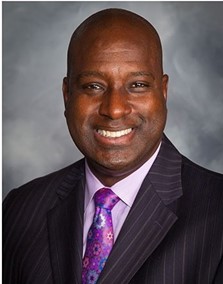
Alpha Business Solution’s CEO, Gene Waddy, has been a long-standing member of the New York & New Jersey Minority Supplier Development Council (NYNJMSDC). In fact, Gene joined the Council in 2005 when he co-founded his first enterprise, DIVERSANT. Since then, Gene started and grew Alpha Business Solutions into the largest African American, male-owned payroll/employer-of-record firm in the industry and has seen explosive growth since its founding in 2017.
As the Council celebrates its 50th anniversary, we are thrilled to announce the participation of Alpha Business Solutions as a VIP sponsor for this year’s anniversary activities and events. With Alpha Business Solutions joining as a VIP Sponsor, we look forward to furthering our shared mission and fostering meaningful connections between registered minority-owned businesses and corporate partners, propelling economic growth and opportunity for all.
About Alpha Business Solutions
Alpha Business Solutions is a vision-driven company that is built for client service and community advancement. Their focus on diversity and inclusion is less to do with hitting quotas and more to do with making their company stronger and providing a competitive advantage for their clients. Gene Waddy started this company to create a different approach to staffing and employer-of-record services that combines professional solutions and diversity in a natural and authentic way. They are a payroll, staffing, and risk mitigation service provider for contingent labor, flexible workforces, interns, misclassified 1099 employees, pre-identified talent, seasonal workers, working retirees, and more.
What They Provide:
Payroll Solutions
- Payroll & Benefits Administration – Payroll solutions in all 50 states and Canada that feature background checks, multi-lingual employee support, remote onboarding / off-boarding, expense reporting, ACA-compliant medical benefits, voluntary health benefits, state / local tax deduction management, and a 401K offer.
- Employer of Record – U.S. based customer service staff, client indemnification, customizable solutions for maximum MBE spend.
- Compliance & Reporting – state and federal compliance, independent contractor vetting, invoicing, customized reporting, EEOC compliance, ACA affordability regulations
Staffing Solutions
- Contract Staffing – They provide dedicated Account Managers and Recruiters to work with you to identify your talent needs and requirements. They provide top talent for IT and non-IT roles.
- Risk Mitigation – They also provide employee vetting, proper tax classification and absorb cost burden.
What does being a minority business, or supporting minority businesses, mean to you?
Being a successful minority-owned business allows me to simultaneously live the “American Dream” while being “in service” to my employees, customers, community, and other MBEs via my mentoring program UNITY.
How has being certified with the NMSDC helped your business?
I built two great businesses by leveraging the power of minority business certification embodied in the services offered by NMSDC. I am still building on business relationships I first made via the Council almost 20 years ago and I fervently believe that the best is still yet to come!
I tell my MBE mentees that NMSDC means access, NMSDC means a seat at the table, and it means you have an advocate to speak “truth to power” when it comes to the procurement strategies of major corporations.
In short, being certified allowed me to develop and grow both DIVERSANT and now ALPHA into competitive and scalable firms that solved business problems. The NMSDC was a major facet of the blueprint of success for my companies and it will continue to be for many years to come.
What is one thing you wish you had known when you were starting out in your career?
The one thing I wish I had known when I was starting out in my entrepreneurial career is that you don’t have to know everything to be a good CEO or leader – it’s exactly the opposite, the key is to focus on what you do well and then hire great people to fill the gaps. Hire people that believe in your vision and fit the hiring profile, take care of them, be in service to them, and they will in turn take your business into the stratosphere!

For more information on Alpha Business Solutions, please visit: zebrastrategies.com or follow them on social media: Facebook, LinkedIn, & Twitter.
Pride Month 2023: Promoting Diversity, Inclusion, and Progress

As the month of June begins, the Council joins the country in celebrating Pride Month—an important time to honor and recognize the LGBTQ+ community and their invaluable contributions. This month, we want to take a moment to reflect on the significance of Pride Month and highlight our commitment to fostering a culture of acceptance and equality.
At The Council, we champion diversity in all its forms. We recognize that embracing diversity strengthens the fabric of our society and creates a more inclusive business landscape. By celebrating the LGBTQ+ community during Pride Month, we reaffirm our commitment to supporting and uplifting voices from all walks of life.
With so many prominent members of the LGBTQ+ community becoming notable business leaders it’s hard to highlight just a few individuals who have made an impact. There’s Beth Ford, the first openly gay woman to lead a Fortune 500 company while working at Land O’ Lakes. While leading the company, she is one of two Fortune 500 companies in the Twin Cities to celebrate Transgender Awareness and supports other LGBTQ+ businesses through their very own Supplier Diversity Program.
Moriaki Kida, the Regional Chief Operations Officers for Ernst & Young Japan, is a passionate advocate for inclusivity in the workplace. As he works to expand the company’s footprint in Japan and Taiwan, he is also moving to improve EY policies for LGBTQ+ employees.
Then there’s Allyn L. Shaw, President and CTO of Recycle Track Systems, who dedicates his time to increasing the representation of gender and people of color in his workplace. He also sits on the Board of OUT & Equal where he spearheaded one of the first transgender recruiting efforts of its kind in the banking space.
As you can see, representation in the workplace is a vital factor in moving LGBTQ+ rights forward. We are proud to support those who have come out publicly to show others that being a part of the LGBTQ+ community is something to take pride in. We will continue to support those who champion for diversity and inclusion and take steps to provide representation in their companies.
Pride Month serves as a powerful reminder of the importance of diversity, inclusion, and equality in all aspects of life. At the Council, we stand proudly with the LGBTQ+ community, supporting their rights, voices, and contributions. We invite you to join us in celebrating Pride Month and continuing the journey towards a more inclusive and equitable future. Together, we can create positive change and build a world where diversity is celebrated, and all individuals are empowered to be their true, authentic selves in all aspects of their life.

Sincerely,
Terrence Clark
NYNJMSDC Announces New Prestigious Sponsors for 50th Anniversary
NEW YORK, NY — The New York and New Jersey Minority Supplier Development Council (NYNJMSDC) is thrilled to announce that Alpha Business Solutions and Walker SCM have joined as 50th Anniversary VIP Sponsors for their momentous 50th anniversary year. These partnerships mark a significant milestone for the Council as it aligns with its mission of promoting minority business development, supplier diversity, and economic inclusion. The Council wishes to express its deepest gratitude to our VIP Sponsors for their generous support and commitment to advancing supplier diversity. Their ongoing partnership plays an integral role in driving economic empowerment and creating a level playing field for all MBEs.

As the largest African American male owned payroll/employer-of-record firm in the industry, Alpha Business Solutions is a vision-driven company that has created a new approach to doing business within the industry. CEO, Gene Waddy, has been a longstanding member of the Council since co-founding DIVERSANT in 2005. After selling that company in 2021, he founded Alpha Business Solutions. He and his company bring with them a wealth of experience and expertise that will undoubtedly contribute to the success of the NYNJMSDC’s initiatives. Waddy’s dedication to helping minority businesses was a driving factor for his support of the Council during their 50th Anniversary year.
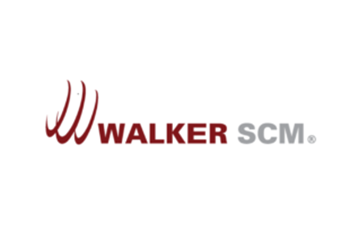
Similarly, Walker SCM, a prominent name in the logistics industry, has stepped forward as a sponsor to support the initiatives of the NYNJMSDC. With their extensive network and deep-rooted commitment to supporting minority businesses, Walker SCM’s sponsorship further amplifies the Council’s ability to connect minority suppliers with potential customers and forge long-lasting partnerships. They are unique in the logistics industry, as a certified-MBE with a global reach, operating in over 25 different countries. They have a true dedication to diversity and their knowledge and expertise will also amplify the mission of the Council to help MBEs find success throughout the year.
The NYNJMSDC has been a pioneer in supplier diversity since its establishment in 1973. Over the past five decades, the Council has dedicated itself to creating opportunities for minority-owned businesses by connecting them with corporations committed to diversity and inclusion. As it embarks on its 50th year, the additional support of these sponsors further enhances its ability to drive transformative change and cultivate mutually beneficial relationships.
“We are thrilled to welcome these two certified-MBE organizations as VIP sponsors for our 50th anniversary year,” said Terrence Clark, President and CEO of the NYNJMSDC. “Their meaningful support is invaluable, especially during this time when we are exploring expanded opportunities for minority-owned businesses locally, and promoting economic equity throughout the network. Together, we will make a lasting impact on the supplier diversity landscape and foster a more inclusive business ecosystem.”
For more information about the NYNJMSDC, its sponsors, or how to get involved, please visit nynjmsdc.org or contact Maria V. Rosa at mrosa@nynjmsdc.org.
About NYNJMSDC:
The New York & New Jersey Minority Supplier Development Council, Inc. (The Council) is an affiliate of the National Minority Supplier Development Council (NMSDC). The Council is dedicated to increasing business opportunities for certified minority business enterprises (MBEs) and connecting them with corporations and government entities that value supplier diversity. Through advocacy, capacity building, and supplier development programs, the NYNJMSDC promotes economic inclusion and fosters mutually beneficial relationships between MBEs and corporations.
MBE Spotlight: Denene Rodney

Denene Jonielle Rodney is an award-winning researcher, graduate of business acceleration programs, and CEO of the qualitative and quantitative research design firm, Zebra Strategies. Through Zebra Strategies, Denene has worked with hundreds of companies across various industries like nonprofits, foundations, government agencies, and varying aspects of healthcare. Zebra Strategies serves these firms with the aim of engaging perspectives of differing cultures, ethnicities, and socioeconomic backgrounds.
Known for her warmth and humor, Denene creates a safe space for people to have open conversations on any topic while maintaining a sense of easiness and respect. Since she founded Zebra Strategies in 2000, Denene’s life, mission, and message have been fully integrated into her company. From her early years, Denene saw that typically many people do not draw a great “ticket” in the “lottery of life.” Through Zebra Strategies, she has made it her goal to bring these voices to the forefront, lift them up, and make them a part of the bigger conversation, and thereby gently shaping the world into a better place.
For Denene, the goal has always been to look past the numbers. She looks at the heart of people’s stories to help understand their background and help their business. “When we research, we find where we’re the same, study why we’re different, and help find actionable solutions that help us weave a web of respect and togetherness.” Denene is an entrepreneur driven by her passion for the communities that she serves. Through her work, she realized that her community and business belong not to just one, but the culmination of so many other communities. This helped her to find common ground, see people as individuals, and marry the perspectives for real-life change.
About Zebra Strategies
Zebra Strategies is a certified woman and minority-owned, integrated, qualitative and quantitative market research and strategy firm. They specialize in marginalized, vulnerable, and hard-to-engage populations. Zebra Strategies has over 20 years of experience and over 400 client engagements across a wide range of industries like consumer products, B2B, Pharma, technology, public health, financial services, nonprofits, foundations, government agencies, and all aspects of healthcare. They focus on difficult-to-reach populations and targets and are known for their inventive recruitment and engagement strategies. Zebra Strategies offers an unparalleled approach to understanding the motivations and cultural nuances of underserved communities and the impact on products, services, social initiatives, and user experiences. Employing a nationwide staff of thirty dedicated professionals, Zebra Strategies has the ability to facilitate research in a number of languages. In each language, the team is highly skilled in engaging vulnerable populations, interpreting responses, and transforming insights into action.
Helping clients see beyond the numbers, Zebra Strategies as a whole is led by the mantra, “Be curious—but not judgmental.” It is this idea that allows the team to connect with various communities and gain insight on sensitive topics, providing safe spaces for candor and respect.
It’s not just black and white. Zebra Strategies’ consultants are a mix of classically trained market researchers, strategists from advertising agencies, and academic researchers—resulting in a holistic portrait of marketing issues with actionable solutions. The mission is to amplify the voices of marginalized and vulnerable populations through meaningful qualitative & quantitative market research.
What does being a minority business, or supporting minority businesses, mean to you?
Being a minority business owner means I’m taking an active role in changing the landscape of what other aspiring entrepreneurs see. When trying to push forward, it’s encouraging to see other people who look like yourself making it on their own terms. Also, it means that I get to bring so many marginalized communities to the table with me when I take my seat.
How has being certified with the NMSDC helped your business?
NMSDC has brought awareness to my business and brand. Clients know who we are and trust us to serve.
What is one thing you wish you had known when you were starting gout in your career?
There will always be something to overcome and people are not always as kind and professional as you think they should be. However, when servicing with dignity and passion, the rewards are always great.
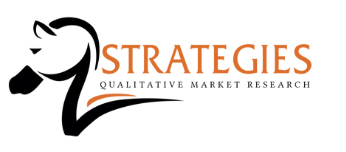
For more information on Zebra Strategies, please visit: zebrastrategies.com or follow them on social media: Facebook, LinkedIn, Twitter, & Instagram.
Why Become a Certified-MBE?
We are happy to offer bi-monthly webinars that are designed to provide potential new members in the New York and New Jersey area with a comprehensive understanding of the benefits of MBE certification.

About Pre-Certification Webinars
Are you interested in becoming an NMSDC certified-MBE in New York or New Jersey?
Our team will guide potential MBE’s through the application process, including the required documents and supporting materials needed to complete the application. We also provide valuable insights into the benefits of certification and how it can help grow your business. During these online sessions, we encourage attendees to ask any questions they have about the certification process. We will be on hand to provide you with the information you need to successfully complete your certification application.
We understand that the certification process can be complex and time-consuming. That’s why we’re committed to making it as easy as possible for you. Join our Pre-Certification Webinars and take the first step towards unlocking the benefits of certification for your business.
Questions? Register Now for one of our upcoming Pre-Certification webinars, which occur twice a month.
2023 AAPI Heritage Month
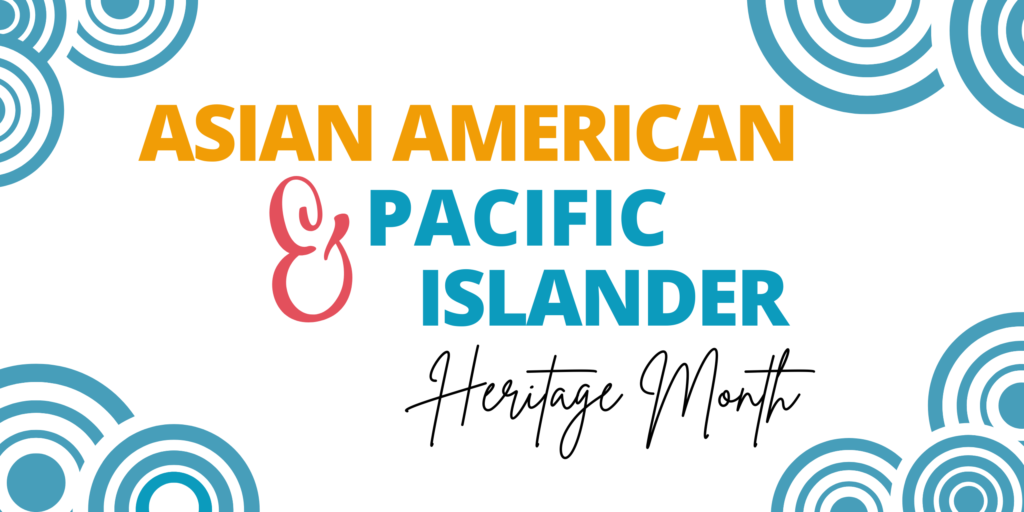
“Advancing Leaders Through Opportunities”
As May approaches, we reflect on the significance of the upcoming month, which marks the 45th anniversary of Asian American & Pacific Islander (AAPI) Heritage Month. Over the years, this month-long celebration has provided people across the country with valuable opportunities to learn about the rich history and diverse cultures of AAPI communities. It is also a time to honor and recognize the significant contributions that AAPI individuals have made to our country.
Despite the challenges posed by the pandemic, AAPI businesses have continued to thrive and expand in the United States. In fact, they are currently the fastest-growing segment of small businesses in the country. As we see promising increases in their growth, we are proud to have a large number of AAPI businesses certified with us at The Council. With New York boasting the second-largest number of AAPI-owned businesses, we are committed to providing opportunities that foster even more growth and success for these businesses in the future.
This year’s theme for AAPI Heritage Month is “Advancing Leaders Through Opportunities“, highlighting the importance of providing equal access and opportunities for AAPI leaders to succeed and make a positive impact in their communities. At The Council, we strive everyday to bring new opportunities to minority businesses and to invent new and different ways for our MBEs and corporate members to find success. Coming up this month, we have our first signature event of 2023, the Business Opportunity Exchange, which is an excellent opportunity to network and advance yourself—or your business—professionally. If you want to see what else we have coming up, visit our calendar to see what we have to offer!
Each year we at The Council become more committed to promoting diversity and inclusion in the workplace and beyond. Moreover, we recognize the important role that AAPI individuals and communities play in our society and are proud to celebrate AAPI Heritage Month with our partners and stakeholders.
We encourage everyone to take part in the celebrations and learn more about the rich history and culture of the AAPI community. And remember to stay connected with us on social media to learn more about their culture and accomplishments.
Happy AAPI Heritage Month 2023! Let us all work together to build a more inclusive and equitable society for all.

Sincerely,
Terrence Clark
Straight Talk with Terrence Clark
If you’re ready to learn from one of the best in the industry and connect with like-minded professionals, join us for the next Straight Talk with Terrence Clark event.

About Straight Talk with Terrence Clark
Get personalized attention and build your business network
Here at The Council, we offer our certified-MBEs the opportunity to attend meetings with our President and CEO, Terrence Clark. During these virtual sessions, he shares his expertise and insights on wide-ranging business topics—covering everything from the “right” way to network to how to secure your first contract. The focus of each session is different, ensuring that attendees always leave with new knowledge and valuable takeaways.
At the end of each session, attendees are invited to introduce themselves and their business to the rest of the group. These 2-minute roundtable sessions are an excellent opportunity to perfect your pitches and connect with other professionals in our network—and perhaps in your own industry.
Each session is held virtually, allowing you to network and make new connections from the comfort of your office or home. Whether you’re a seasoned business professional or just starting out, you’ll leave feeling inspired and empowered to take your business to the next level.
Learn more about Terrence Clark →
“Organizations do business with people they know, they like, and they trust.“
—Terrence Clark
Join the Discussion
Straight Talk sessions happen once a quarter. Upcoming dates are available on our Events Calendar. But you can view past discussions online at your convenience through the NYNJMSDC YouTube channel.
A Message of Sustainability from Terrence Clark

As we approach Earth Day on April 22nd, I want to take a moment to emphasize the importance of recognizing this day for businesses. For over half a century, Earth Day has served as a reminder of the impact that we, as individuals and as business leaders, have on the environment. It is our responsibility to ensure that we are doing everything we can to reduce our environmental footprint.
It is also crucial to acknowledge the disproportionate effects that climate change continues to have on minority communities. The impacts of environmental degradation are felt most by those who are already marginalized and vulnerable. We cannot address the issues of climate change without also addressing the issues of equality—they go hand-in-hand. The term climate justice was created to address the need to solve both issues.
For decades, minority communities have been pushed into lower income housing and have had to face the effects of severe storms, weather related disasters, and pollution as a result of climate change. As advocates for diversity and inclusion, and business leaders, it is our duty to ensure that our business practices are not exacerbating these disparities and to work to create an equitable future for all.
We want to give special recognition to the certified-MBE’s and corporate partners in our network who have already made sustainability a part of their business practice. By prioritizing sustainability, you are not only contributing to a healthier planet, but you are also demonstrating your commitment to being a responsible part of our community and recognizing the needs of all stakeholders. Sustainability in the diversity supply chain is a topic that The Council will continue to promote and include in our programming. Those who attended last year’s Sustainability Symposium know first hand that this is a subject near and dear to our hearts and we will continue to make every effort necessary to keep change moving forward.
Let us all take time this week and every week to reflect on our business practices and find more ways we can sustainably reduce our carbon footprint.

Sincerely,
Terrence Clark
